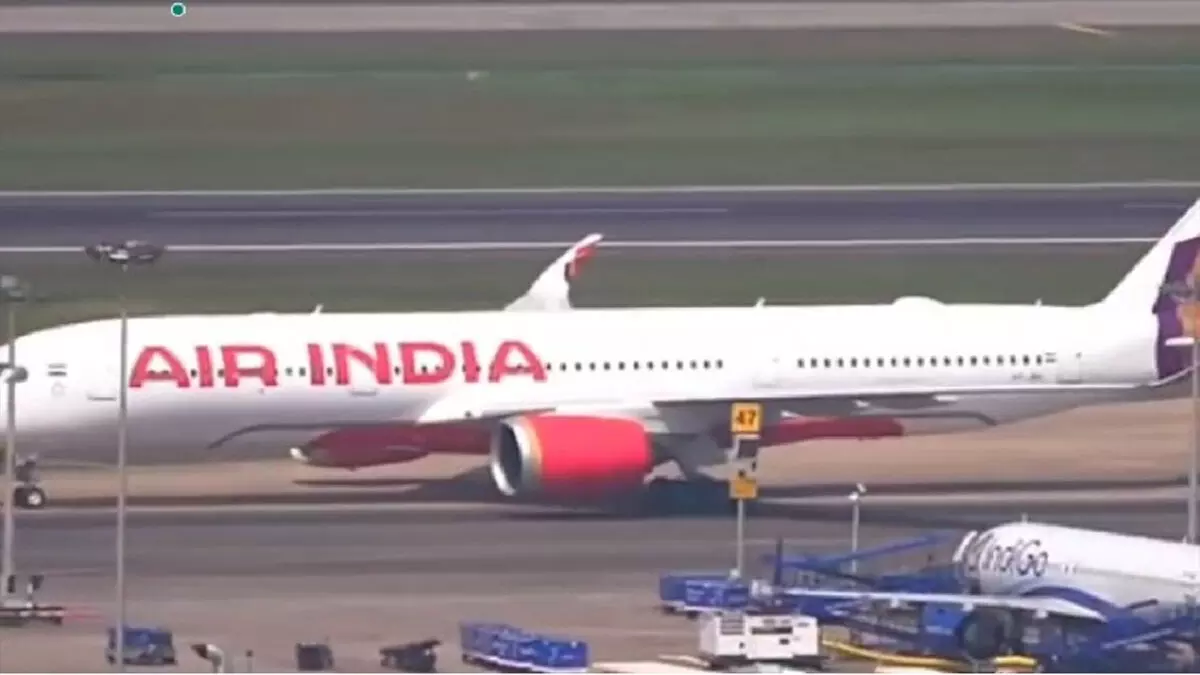NEW DELHI New Delhi: A fall in the rupee puts pressure on Air India’s cost structure and profitability, but the airline has some natural defences as it can charge more for international flights where tickets are priced in foreign currencies, according to a senior company official. In recent weeks, the Indian rupee has declined and hit a record low of 86.04 against the US dollar on January 10. A weak rupee results in higher operating expenses for airlines as most of their costs are denominated in dollars.
Air India’s chief commercial officer Nipun Aggarwal said the fall in the rupee is definitely a challenge for the industry and Air India, and the situation has to be dealt with by improving productivity and taking other initiatives. “A fall in the rupee puts pressure on our cost structure as most of our costs are denominated in dollars, except manpower costs which are denominated in local currency. The more the rupee depreciates, the more pressure it will put on our cost structure and profitability,” he said at a media briefing this week. The Air India group operates 1,168 flights daily, including 313 services to international destinations. Of these overseas flights, 244 are short-haul and 69 are long-haul.
The group comprises Air India and low-cost airline Air India Express.Last year, Air India merged with Vistara and integrated AIX Connect with Air India Express.According to Agarwal, the airline has some natural hedge as it flies a lot more international flights than other airlines.
“So, we are able to charge in international currency for international flights and we are able to pass on some part of that impact to our customers because we are pricing in dollars or whatever currency is available,” he said.At the same time, Agarwal said not everything is priced in foreign currencies. “Even on international flights, we have some impact but some of that can be mitigated by the hedge we have but it does impact our profitability and puts pressure on fares in the market”.
Aggarwal, while trying to highlight the low profitability of the airline industry, said it is not easy to increase airfares as the industry is very competitive and demand is sensitive to pricing.
“We have to fill aircraft and even if we had that much pricing power, the profitability of the airline industry would not be as it is today. This makes it very challenging for us to operate… This (depreciation in the rupee) will put pressure on our cost structure, impacting profitability and demand,” he said.
In December, the International Air Transport Association (IATA) projected the global airline industry’s net profit this year at USD 36.6 billion, for a 3.6 per cent net profit margin.
“Average net profit per passenger is expected to be USD 7 (down from a high of USD 7.9 in 2023 but improving from USD 6.4 in 2024),” IATA said in its financial outlook for 2025.
Air India is a member of IATA.
Taking a broader view, Aggarwal also pointed out that the rupee has been depreciating by about 2-3 per cent every year for the past several years, and not just the airline industry but many other sectors have become accustomed to this situation.
“We are not alone in this. We will deal with it and we are confident that it is not such a big issue,” he said.
Loss-making Air India is implementing an ambitious turnaround plan and is gradually expanding its fleet as well as network amid rising air traffic demand.
